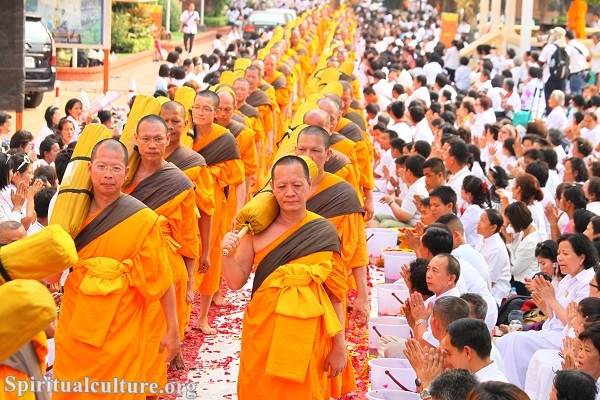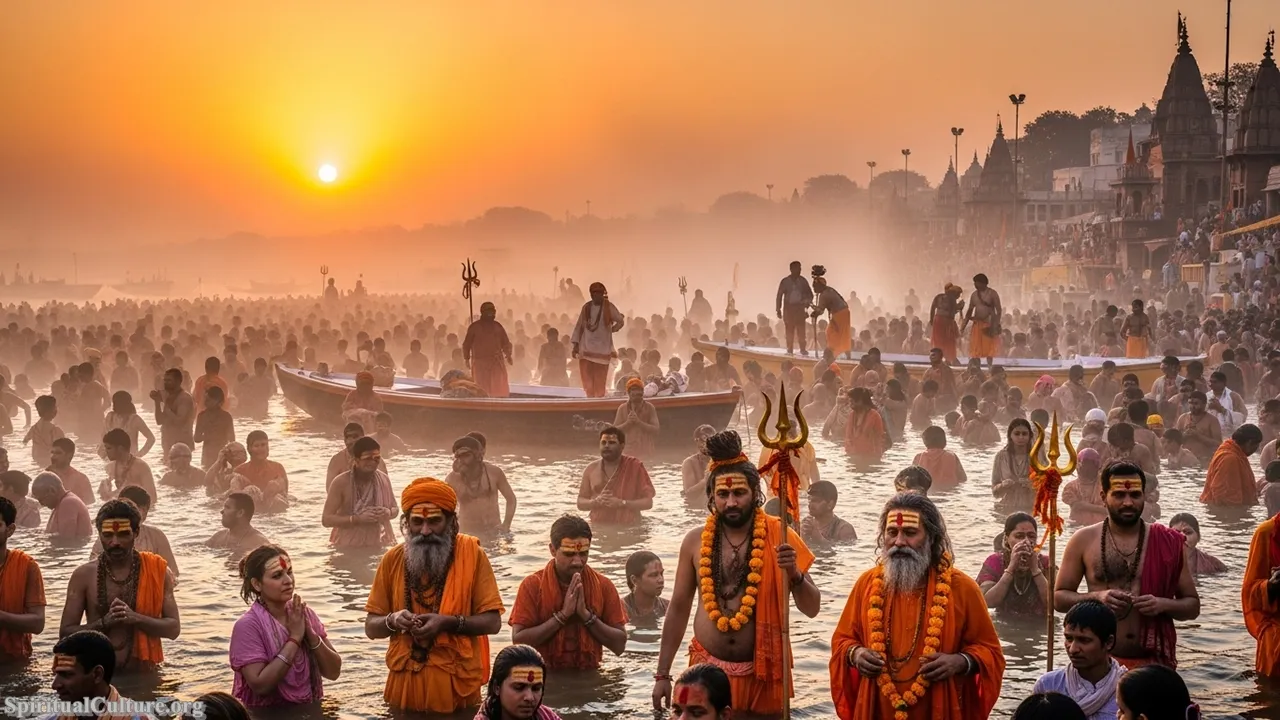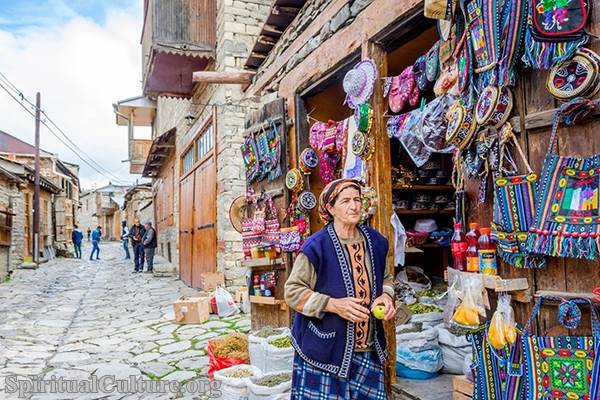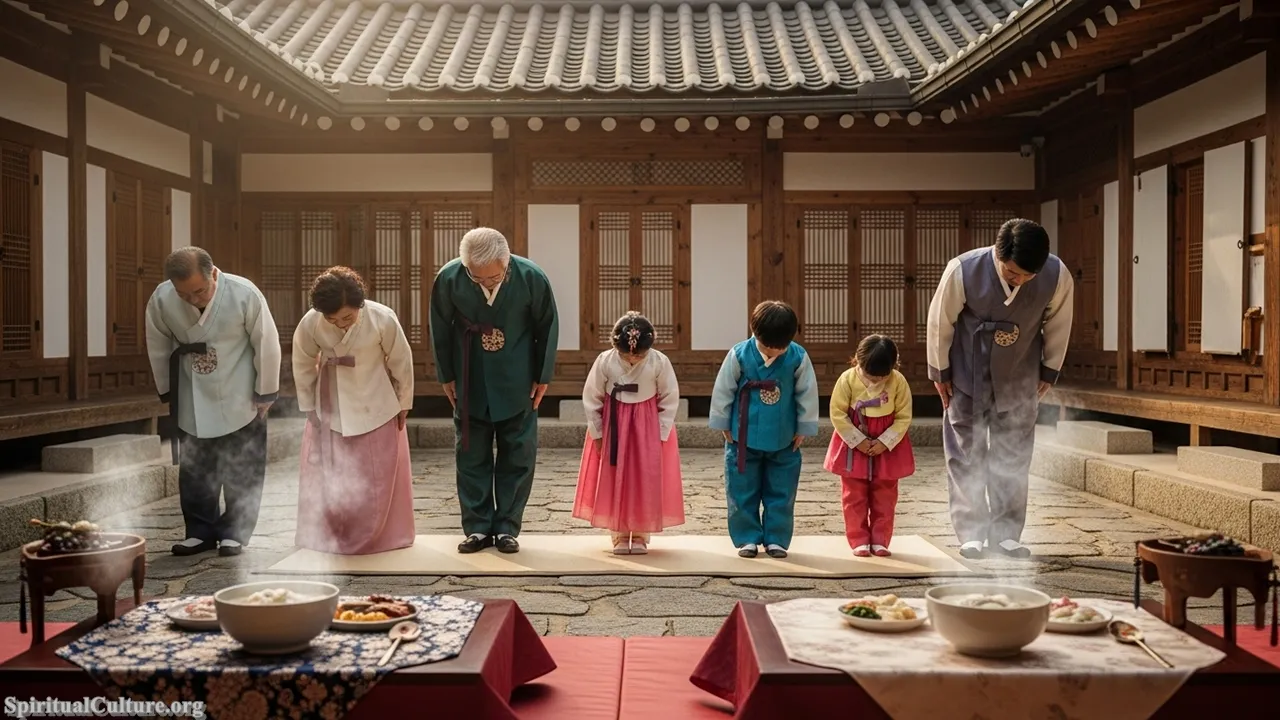The United Arab Emirates stands today as a global nexus where tradition meets breathtaking innovation. Yet, to truly understand this vibrant nation, one must look beyond the gleaming skyline and dive into its rich tapestry of culture, heritage, and profound spirituality. At Spiritual Culture, we recognize that the most impactful attractions are those that serve not just as photo opportunities, but as vital links to the soul of the region and its history.
As of November 2025, the popularity of the UAE’s cultural sites continues to soar, driven by global interest in authentic Emirati identity and Islamic art. These destinations offer a crucial insight into the Bedouin spirit, the foundational stories of the federation, and the enduring power of faith.
This authoritative “Top 10” guide celebrates the places that best encapsulate the nation’s history and spiritual values. Our ranking is grounded in criteria combining visitor popularity, documented historical significance, architectural spiritual impact, and the educational scope of the heritage presented, providing a deep, evidence-based cultural analysis.
Table of the Top 10 Most Popular Cultural Attractions in the UAE (November 2025)
| Rank | Attraction | Emirate | Core Spiritual/Cultural Value |
|---|---|---|---|
| 1 | Sheikh Zayed Grand Mosque | Abu Dhabi | Islamic Faith, Architectural Grandeur, Unity |
| 2 | Louvre Abu Dhabi | Abu Dhabi | Universal Culture, Light, Philosophical Exchange |
| 3 | Al Fahidi Historical Neighborhood | Dubai | Traditional Life, Architectural Heritage, Simplicity |
| 4 | Qasr Al Watan (Presidential Palace) | Abu Dhabi | Governance, Knowledge, Modern Islamic Art |
| 5 | Etihad Museum | Dubai | National Unity, Founding Spirit, Historical Legacy |
| 6 | Dubai Museum / Al Fahidi Fort | Dubai | Transformation, Resilience, Pre-Oil History |
| 7 | Jumeirah Mosque | Dubai | Open Doors, Intercultural Dialogue, Islamic Tradition |
| 8 | Qasr Al Hosn | Abu Dhabi | Origin of Abu Dhabi, Resilience, Ancestral Seat |
| 9 | Hatta Heritage Village | Dubai (Hatta) | Bedouin Roots, Mountain Culture, Preservation |
| 10 | Al Shindagha Museum | Dubai | Creek Life, Trade Heritage, Emirati Identity |
#1. Sheikh Zayed Grand Mosque, Abu Dhabi
As of November 2025, the Sheikh Zayed Grand Mosque remains the undisputed zenith of cultural popularity and spiritual majesty in the UAE. This colossal structure is not merely a place of worship but a monumental work of art that seamlessly blends different Islamic architectural styles, drawing millions of visitors annually. Its sheer scale and immaculate white marble domes symbolize purity and peace, setting a standard for modern Islamic design on a global stage, validated by continuous high visitation records.
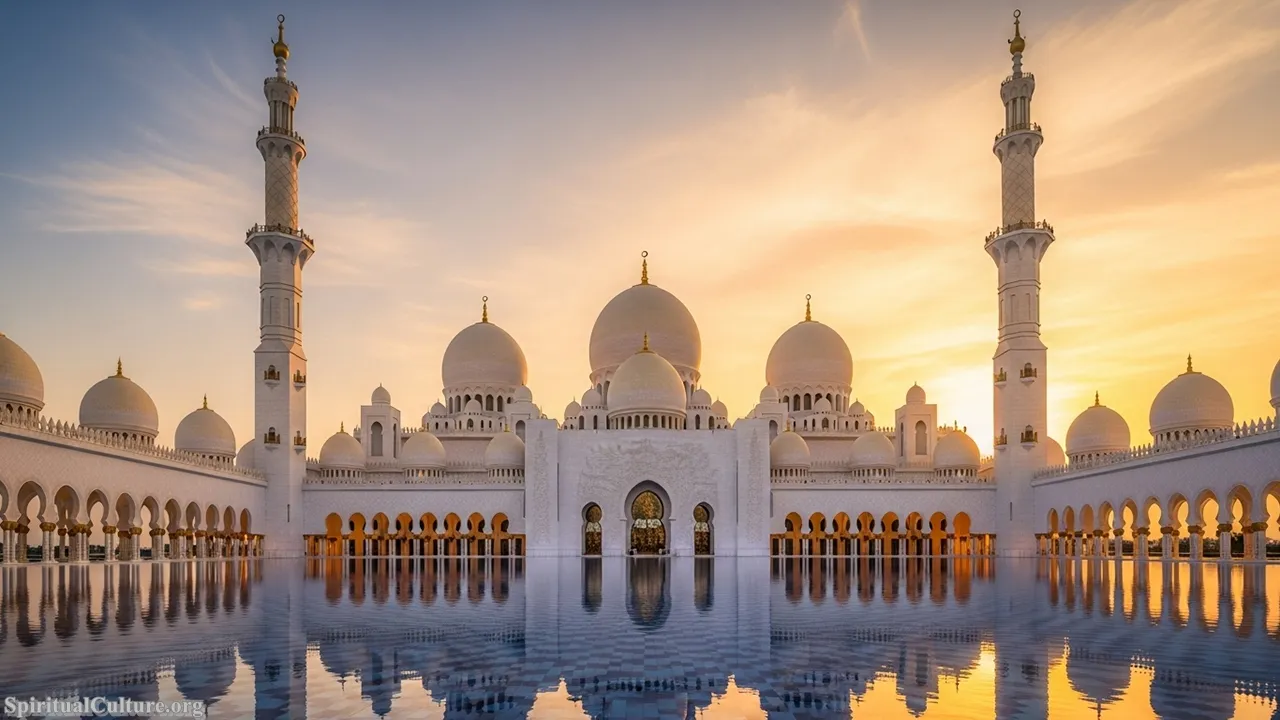
The reason for its premier ranking lies in its profound spiritual impact. It functions as the nation’s central place of worship and a powerful symbol of the UAE’s founding vision—unity, tolerance, and peaceful coexistence. The design incorporates natural elements like mother-of-pearl, semi-precious stones, and reflective pools, guiding the worshipper’s attention towards the heavens and cultivating an immediate sense of awe and profound spiritual tranquility. This focus on light and universal beauty explains the mosque’s unique ability to transcend mere religious structure and become a shared cultural icon.
The moral lesson offered by the Grand Mosque is the immense strength found in shared reverence and architectural dedication. Its preservation is handled with meticulous care, ensuring that this sacred space continues to transmit the message of enlightened moderation and beauty to every visitor, making it a cornerstone of Spiritual Culture’s ethos regarding heritage preservation.
Cultural/Spiritual Highlights:
- Features the world’s largest hand-knotted carpet.
- Capacity to host over 40,000 worshippers and visitors daily.
- Architectural style is a convergence of Ottoman, Mamluk, and Fatimid elements.
- The use of pure white Sivec marble symbolizes virtue and peace.
#2. Louvre Abu Dhabi, Abu Dhabi
The Louvre Abu Dhabi, inaugurated on Saadiyat Island, represents the UAE’s modern commitment to intellectual and cultural exchange, securing its place as a top-tier attraction as of the Current Time of Writing. Its popularity is rooted in its unique positioning as the first universal museum in the Arab world, dedicated to sharing human stories across different cultures and eras. It stands as a beacon of cross-cultural dialogue, housing artifacts that trace the shared human experience from prehistory to the contemporary age.

Its spiritual impact is architectural and philosophical. The museum’s famous dome, designed by Jean Nouvel, creates a mesmerizing “rain of light” effect, inspired by the interwoven palm fronds of traditional Arabian roofing. This effect is a profound metaphor for the museum’s mission: light penetrating darkness, knowledge illuminating the world, and cultures intermingling beneath a shared celestial canopy. This physical manifestation of shared humanity and enlightenment is its core spiritual contribution, justifying its high ranking as a modern cultural pilgrimage site.
This institution reinforces the preservation value of cultural narratives, insisting that no culture exists in isolation. It encourages reflection on interconnectedness, a vital moral lesson for the globalized world. By preserving and presenting universal stories, the Louvre Abu Dhabi fosters respect and deep appreciation for diverse human heritage, central to the mission of Spiritual Culture.
Cultural/Spiritual Highlights:
- The “Rain of Light” effect created by the geometric dome structure.
- It operates under an unprecedented agreement with the French government to use the Louvre name for thirty years.
- Collections trace the journey of humanity and the convergence of civilizations.
- It is designed as a ‘Museum City’ floating on the sea.
#3. Al Fahidi Historical Neighborhood, Dubai
The Al Fahidi Historical Neighborhood, often called Al Bastakiya, is a mandatory stop for anyone seeking the original pulse of Dubai, maintaining high popularity for its tangible connection to the past as of November 2025. This district, nestled along Dubai Creek, features meticulously restored buildings with traditional wind-tower (Barjeel) architecture, narrow alleys (Sikak), and tranquil courtyards. It preserves the authentic atmosphere of the late 19th century, before the city’s meteoric rise.
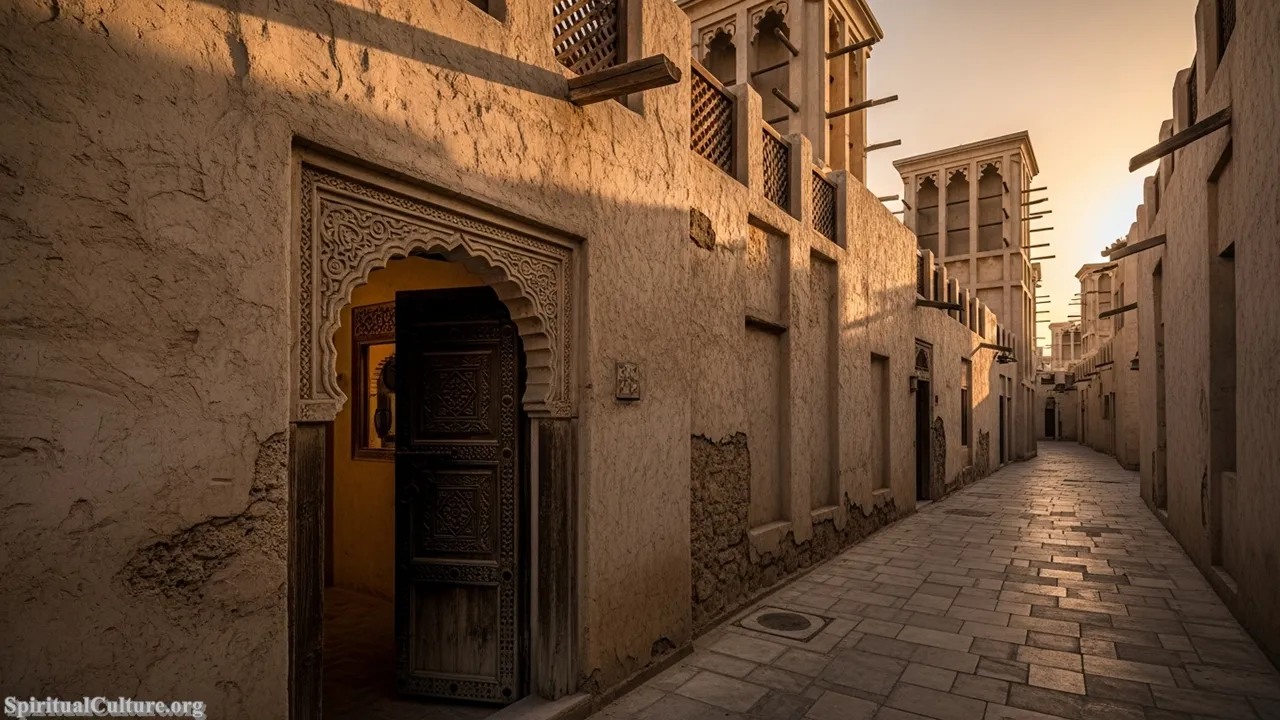
Its reason for ranking highly stems from its powerful spiritual impact related to rootedness and simplicity. Walking through Al Fahidi, one is transported back to the era of pearl diving and trade, reminding us of the resilience and resourcefulness of the early settlers. The wind towers themselves are a heritage marvel, symbolizing adaptation to the environment—a spiritual lesson in living in harmony with the natural world. This neighborhood highlights the deep cultural value of ancestral simplicity against the backdrop of modern complexity, anchoring the city’s identity.
Al Fahidi serves as a moral touchstone, teaching the value of modesty and community design. Its continued preservation offers a vital contrast and context to the modern city, reminding both residents and visitors that true cultural wealth is found in history and communal ties, not solely in material progress. This commitment to heritage is why it remains a revered site for Spiritual Culture.
Cultural/Spiritual Highlights:
- Home to the highest concentration of traditional Barjeel (wind towers).
- The district hosts numerous museums, art galleries, and cultural centers.
- It represents the pre-oil economy centered around trade and the Creek.
- Features traditional gypsum, coral, and sandstone building materials.
#4. Qasr Al Watan, Abu Dhabi
Qasr Al Watan, the Presidential Palace, is a major cultural destination that transitioned from a governmental space to a popular public attraction, offering deep cultural insights as of the Current Time of Writing. This magnificent landmark showcases the UAE’s history, culture, and governance vision. Its massive Great Hall and the “House of Knowledge” are integral to its draw, representing the nation’s commitment to intellect, tolerance, and dialogue.

The spiritual impact of Qasr Al Watan is tied to its role as a repository of national values. The stunning architecture utilizes intricate Islamic geometric patterns, reflecting the eternal, non-anthropomorphic nature of the divine, conveying a sense of order and transcendent beauty. The “House of Knowledge” specifically highlights the Arab world’s historic contributions to fields like science and philosophy, fostering intellectual humility and pride. The structure’s dedication to transparency and national dialogue elevates it beyond a mere government building to a spiritual symbol of the nation’s aspirations.
The palace provides a crucial lesson in leadership and national identity, emphasizing the moral responsibility that comes with sovereignty and wealth. Its preservation value lies in presenting the living history of the UAE’s governing philosophy—one built on consultation and knowledge. It affirms the modern Emirati culture as a continuation of sophisticated Islamic and Arabian traditions.
Cultural/Spiritual Highlights:
- Houses the official meeting place of the UAE’s supreme constitutional authority.
- The Great Hall features one of the world’s largest central domes, measuring 37 meters wide.
- The “House of Knowledge” displays rare artifacts and manuscripts highlighting Arab contributions to learning.
- Its design emphasizes continuity with traditional Arabian architecture.
#5. Etihad Museum, Dubai
The Etihad Museum is a contemporary cultural institution that attracts significant attention due to its essential historical content, securing its middle-ground ranking as of November 2025. The museum is critically important as it is located on the very spot where the 1971 Union Agreement was signed, establishing the United Arab Emirates. Its mission is singularly focused on documenting the nation’s founding story and the spirit of the seven founding fathers.

The spiritual impact here is primarily patriotic and historical. The building’s design, particularly the curved white roof, is inspired by the shape of the Union Agreement document itself, symbolizing the binding nature of the nation’s promise. The museum evokes a profound sense of gratitude and reflection on the sacrifices and unifying vision required to forge the federation. It celebrates the spiritual commitment of the Rulers to create a unified state, translating a political event into a shared narrative of hope and collective destiny, which is vital to Spiritual Culture’s understanding of national identity.
The preservation value of the Etihad Museum is immense, as it serves as a tangible, multimedia record of the creation myth of the modern nation. The moral lesson is the power of convergence—that differences can be bridged for a greater collective good, offering a universal message of unity and collaborative vision.
Cultural/Spiritual Highlights:
- Located next to the historical Union House flagpole.
- Focuses on the timeline from 1968 to 1971, detailing the formation of the UAE.
- Features interactive exhibits and films on the founding fathers.
- The architectural design symbolizes the written document of the union.
#6. Dubai Museum / Al Fahidi Fort, Dubai
Situated in the Al Fahidi Fort, the oldest building in Dubai (built in 1787), the Dubai Museum has been a steady cultural magnet for decades, highly popular for its deep historical roots as of November 2025. The fort’s structure itself represents the defensive and governmental past of the city, while the museum housed within documents the transformation of Dubai from a small fishing and pearl-diving village into the global metropolis it is today.
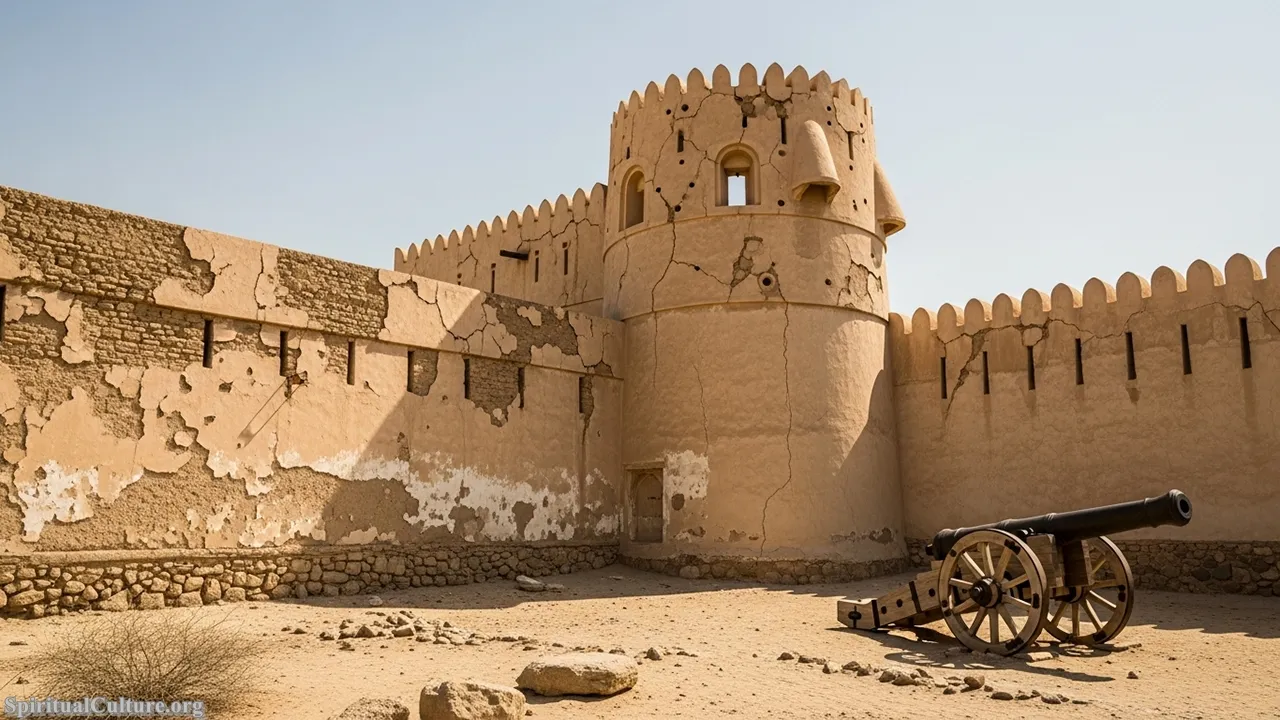
The reason for its steady ranking lies in its narrative of resilience and spiritual fortitude. The historical display uses dioramas and immersive environments to showcase the arduous life of the pearl divers, Bedouins, and souk traders. This focus on past hardship cultivates a spiritual appreciation for the ease of modern life and highlights the profound strength and faith required for survival in the harsh Arabian environment. It connects the present city to its simple, often demanding, historical origins.
This attraction offers the moral lesson that true progress is rooted in a clear memory of where we began. The museum’s preservation of early artifacts, maps, and tools ensures that the humility and determined spirit of old Dubai are never forgotten. It is a critical cultural anchor for understanding the city’s meteoric ascent, a theme highly relevant to Spiritual Culture’s focus on transformation.
Cultural/Spiritual Highlights:
- Al Fahidi Fort is the oldest existing structure in Dubai.
- Exhibits detail the ancient professions, including the physically demanding life of pearl diving.
- Showcases the city’s architectural evolution and early municipal services.
- The fort previously served as a residence for the Ruler, an arsenal, and a prison.
#7. Jumeirah Mosque, Dubai
The Jumeirah Mosque is recognized as one of the most popular and important religious sites in Dubai, maintaining its status as a key cultural attraction as of the Current Time of Writing. Built in the traditional Fatimid style, it is unique in Dubai for its “Open Doors. Open Minds” policy, actively welcoming non-Muslim visitors to learn about Islam and Emirati culture, which greatly contributes to its high visibility.
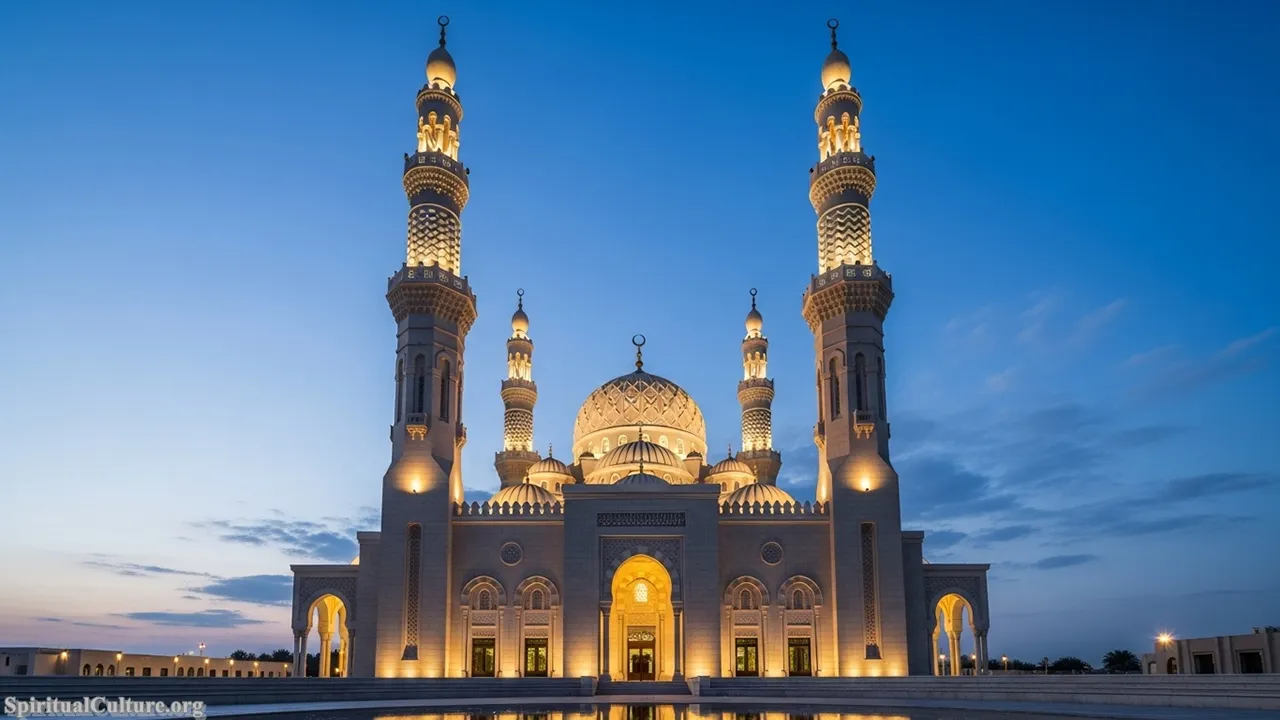
Its spiritual impact is centered on intercultural dialogue and promoting mutual understanding. The mosque embodies a welcoming spirit—an act of faith that seeks to educate and dispel misconceptions. Its architectural beauty, particularly when illuminated at sunset, evokes a sense of peace and timeless tradition, encouraging reverence regardless of the visitor’s background. By making Islamic spirituality accessible and inviting, it transcends the role of a local place of worship to become a global embassy of faith and tolerance, a profound cultural offering.
The moral lesson of Jumeirah Mosque is the imperative of openness and gracious hospitality. Its commitment to transparent education and dialogue is a powerful preservation tool for Islamic tradition, ensuring its values are communicated directly and authentically to the world. It perfectly exemplifies the humanistic values championed by Spiritual Culture.
Cultural/Spiritual Highlights:
- It is built entirely of white stone, reflecting the purity of faith.
- One of the few mosques in Dubai offering guided tours to non-Muslims.
- Its architecture follows the medieval Fatimid tradition of Syria and Egypt.
- Managed under the Sheikh Mohammed Centre for Cultural Understanding (SMCCU).
#8. Qasr Al Hosn, Abu Dhabi
Qasr Al Hosn is the historical heart of Abu Dhabi, having served as a watchtower, residence, and seat of government for two centuries, making it hugely popular with history enthusiasts as of November 2025. It is the oldest stone structure in the city and represents the chronological origin of the capital, detailing the life of the ruling Al Nahyan family and the social dynamics of the city before the discovery of oil.
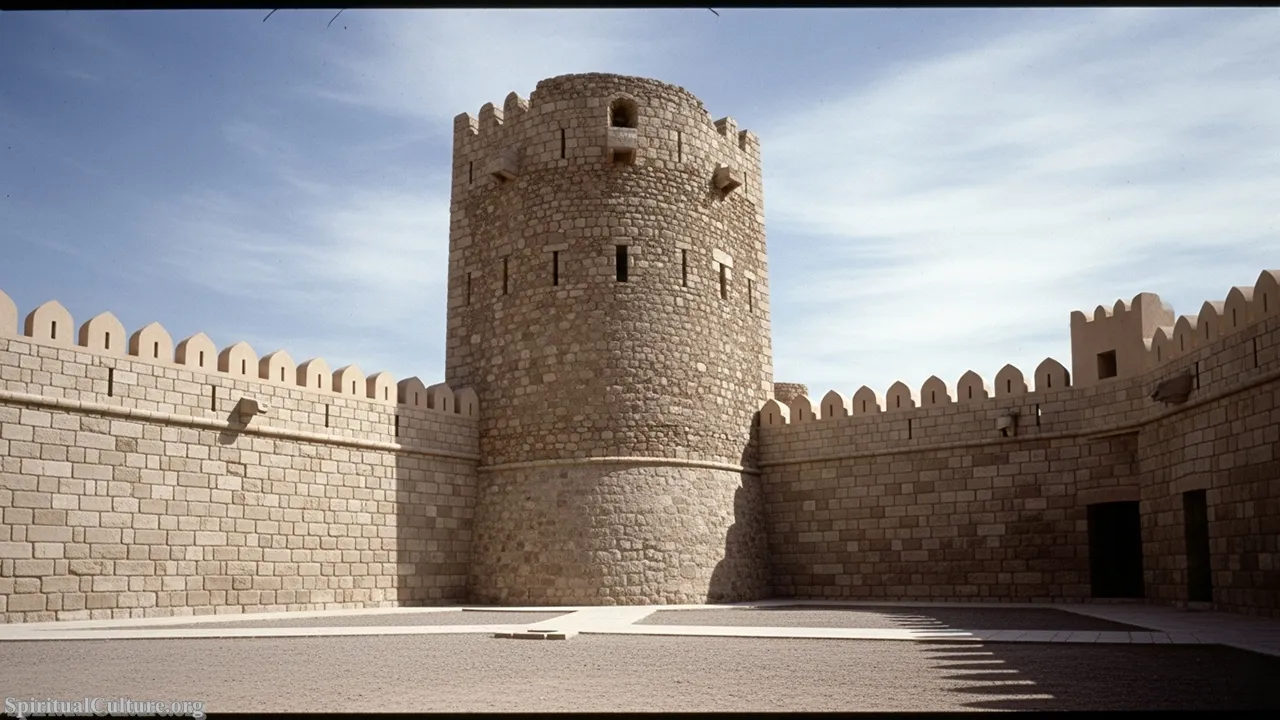
Its spiritual significance is deeply tied to the concepts of continuity and ancestral stewardship. The fort’s modest, yet powerful, construction reminds us that the vast prosperity of today sprung from humble beginnings and the vigilant protection of the land. Its preservation tells the story of the community’s collective memory and the spiritual connection between the ruling family and their people. It embodies the enduring Arabian values of resilience and dedication to the land, fundamental to the ethos of Spiritual Culture.
Qasr Al Hosn preserves the authentic narrative of Abu Dhabi’s political and social foundation. The moral lesson it imparts is that even the grandest nations have modest, hardworking origins that must be respected and remembered. Its careful restoration ensures that the quiet dignity of the past is not overshadowed by the noise of the present.
Cultural/Spiritual Highlights:
- The original watchtower was built around 1761, making it the oldest building in Abu Dhabi.
- It served as the residence of the ruling family until the 1960s.
- The site is part of a larger complex that documents Abu Dhabi’s transformation.
- Exhibits focus on the daily lives and rituals within the palace walls.
#9. Hatta Heritage Village, Dubai (Hatta)
The Hatta Heritage Village, nestled high in the Hajar Mountains, is gaining popularity as a destination for cultural eco-tourism as of the Current Time of Writing. This carefully restored mountain village offers a perfect encapsulation of traditional Emirati mountain life, providing a distinct cultural perspective away from the coastal cities of Dubai and Abu Dhabi. It represents the historical and geographical diversity of the UAE.

The spiritual impact of Hatta lies in its demonstration of harmonious living with a rugged environment. The village, with its mud, stone, and palm-frond houses, evokes a spirit of sustainable self-reliance and community cooperation. It teaches the spiritual discipline of contentment and frugality that characterized traditional life. The backdrop of the majestic mountains further connects visitors to the immense power and quiet majesty of nature, a crucial element of the holistic perspective of Spiritual Culture.
The village’s dedicated preservation effort ensures the mountain culture—the Bedouin roots—remains a tangible part of the national story. It offers a vital moral reflection on resourcefulness and the ability of human communities to thrive by respecting their immediate natural surroundings, a powerful counterpoint to modern urban development.
Cultural/Spiritual Highlights:
- Comprises over 30 reconstructed structures, including a fort and a mosque.
- Showcases traditional weapons, costumes, and domestic tools of mountain dwellers.
- The architecture utilizes local materials like mountain stone, clay, and palm wood.
- Features a historical irrigation system (Falaj) demonstrating ancient agricultural wisdom.
#10. Al Shindagha Museum, Dubai
The Al Shindagha Museum rounds out our list as a continuously developing and highly popular hub for experiential heritage learning as of November 2025. Situated along the historical Dubai Creek, the museum complex is dedicated to preserving the memory of the city’s origins along its crucial waterway and the development of the Emirati national identity.

The spiritual value of Al Shindagha is tied to the concept of foundational identity and sensory memory. Its exhibits, such as the “Perfume House,” dive into the deep history of Emirati sensory culture—the sacred role of incense and fragrance in hospitality and personal life. The Creek itself symbolizes the lifeblood of the community, and the museum instills a spiritual appreciation for the continuity of trade, ingenuity, and cultural rituals that defined early Dubai life.
This attraction serves a critical preservation role by focusing on the intangible heritage and daily life of the community that evolved around the Creek. The moral lesson here is that culture is found not just in grand monuments but in the rituals, scents, and everyday practices of a people. Spiritual Culture celebrates Al Shindagha for its meticulous detail in protecting the minute, yet essential, facets of Emirati life.
Cultural/Spiritual Highlights:
- Located in the traditional quarter where Sheikh Saeed Al Maktoum once resided.
- Houses the “Perfume House,” detailing the cultural and spiritual significance of Emirati scents.
- Focuses on the story of Dubai Creek: Birth of a City.
- Utilizes immersive technology to bring heritage stories to life.
Conclusion
The United Arab Emirates offers an extraordinary cultural landscape where the ancient past actively informs the vibrant present. As of November 2025, the attractions listed above are more than just popular destinations; they are spiritual narratives in stone, marble, and sand, each one reflecting a commitment to heritage, enlightenment, and unity. From the quiet majesty of the Sheikh Zayed Grand Mosque to the humble historical lessons of Qasr Al Hosn and Al Fahidi, the UAE demonstrates that true cultural power lies in recognizing, preserving, and sharing one’s deepest values.
At Spiritual Culture, we celebrate the UAE’s success in weaving its profound spiritual legacy into the fabric of its global identity. These ten sites serve as powerful reminders that even in the face of rapid modernization, the soul of a culture remains rooted in its history, its faith, and its enduring humanistic spirit. Visiting them is not just sightseeing; it is an act of cultural and spiritual enrichment.
